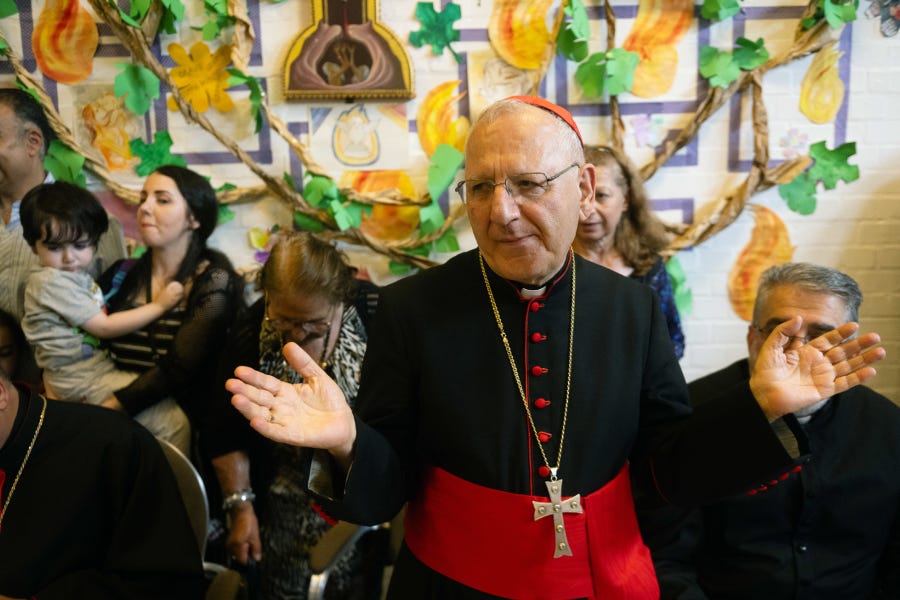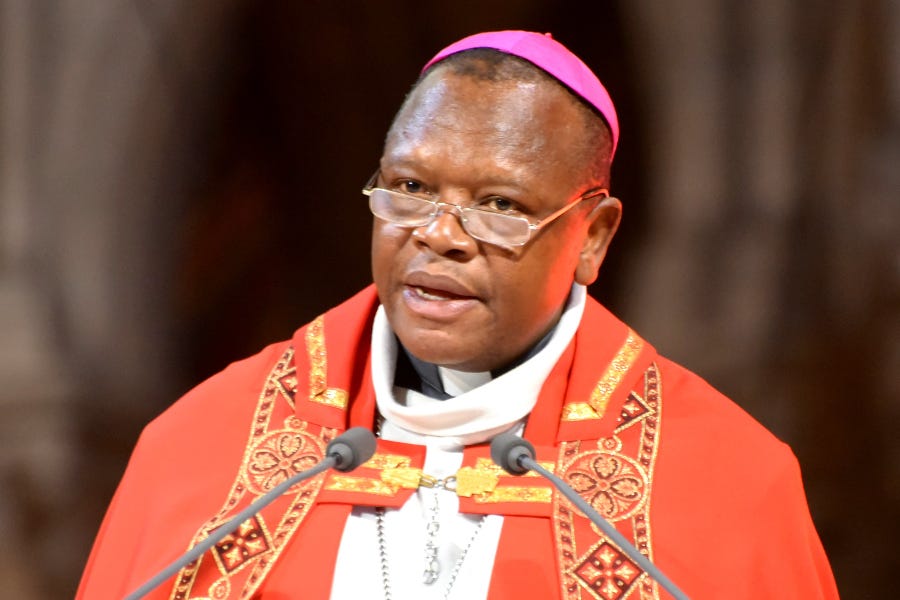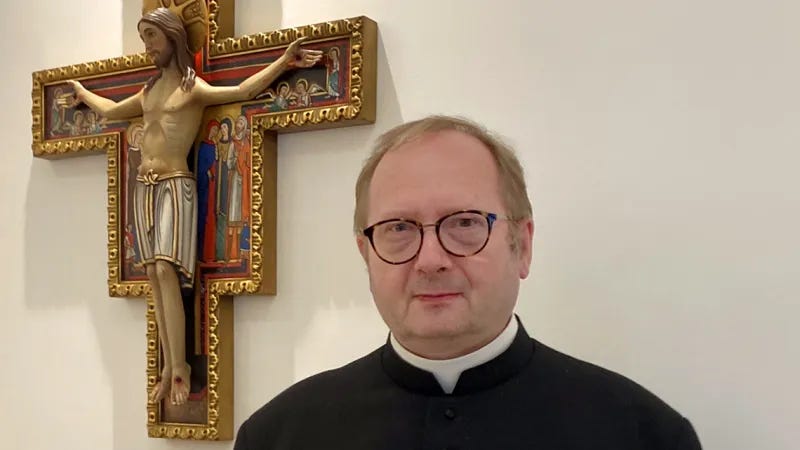When Cardinal Louis Raphaël Sako returned unexpectedly to Baghdad last week, there was one big question.

Why did the head of the Chaldean Catholic Church — one of the 23 autonomous Eastern Catholic Churches in full communion with Rome — choose to come back now?
After the 74-year-old left the Iraqi capital for Erbil in July 2023, he made it clear he would not return until President Abdul Latif Rashid restored a civil decree recognizing Sako as the head of the Chaldean Catholic Church and the person responsible for its assets.
The decree was issued by Rashid’s predecessor Jalal Talabani in 2013, the year Sako took the helm of the Eastern Church with over half a million members in more than a dozen countries.
When Rashid — Iraq’s president since October 2022 — revoked the decree, he said that he did so because it had no “constitutional or legal basis.” He insisted that withdrawing the decree would “not prejudice the religious or legal status of Cardinal Louis Sako.”
But in an August 2023 letter to the president, the cardinal strongly disagreed.
“Without this decree,” he wrote, “I will remain in Erbil until your term ends, and work with the new president to issue an official decree that continues with a tradition that dates back 14 centuries.”
Rashid’s presidential term is not due to expire until October 2026. So why has Sako left Erbil, the capital of the Kurdistan Region, and returned to Baghdad seemingly empty-handed?
There are at least three theories. We might call them the PM theory, the decree theory, and the U.S. theory.
The PM theory
The first theory is that Sako decided to return because he received a personal invitation from Iraq’s Prime Minister Mohammed Shia al-Sudani, who, like Rashid, took office in October 2022.
This idea comes from the cardinal’s public statements following his April 10 return to Baghdad.
The Chaldean Patriarchate’s website underlined that when Sako arrived in the capital, on a flight from Erbil, he was greeted at the airport by a representative of the prime minister. Sako then made a cordial visit to al-Sudani April 11, the day after his return to Baghdad.
And when the cardinal celebrated a Mass April 12 at Baghdad’s Chaldean Cathedral of St. Joseph, he expressly thanked the Iraqi prime minister “for his encouraging invitation to me to return, and for his reception and determination to resolve the issues appropriately and restore dignity to the Chaldean Church.”
So in the cardinal’s telling, he returned because of the Iraqi PM’s personal outreach and assurance that the cardinal’s remaining concerns would be addressed.
The theory’s strength is that al-Sudani was clearly the person who facilitated the cardinal’s return.
Its weakness is that it doesn’t address the underlying question: why now? Why didn’t al-Sudani extend the invitation, say, before Easter, enabling the cardinal to celebrate the feast with his community in Baghdad?
The decree theory
A second theory holds that Sako left Baghdad with the goal of galvanizing support for the restoration of the presidential decree.
He hoped, according to this telling, that the Christian community and the authorities in the autonomous Kurdistan Region would rally around him, vigorously championing his cause.
With the local faithful and officials behind him, he could gain the attention of religious freedom advocates worldwide, turning his case into an international cause célèbre. This would have put the president under pressure to show his commitment to religious liberty by reissuing the decree.
But according to proponents of this theory, the cardinal’s self-imposed exile didn’t turn out this way. He didn’t receive the support he had hoped, either within the Church or outside of it, and realized he would not be able to build the necessary momentum to overturn the decision.
At that point, he had been away from his community for nine months and was in danger of outstaying his welcome in Erbil. It was time to cut his losses and return to his flock.
The prime minister’s invitation, this theory holds, offered a helpful pretext for a return that was, by that stage, overdue.
The strength of this theory is that it recognizes the complexity of the Chaldean Catholic Church, which is far from the monolithic body it is sometimes portrayed as being. It also highlights the sensitivity of Church-state relations in the Kurdistan Region, now home to the vast majority of the country’s dwindling Christian community.
The theory accounts, as well, for why Sako decided to return to Baghdad despite not gaining a concession over the decree.
The theory’s weakness is that it doesn’t fully explain the timing of Sako’s return. Wouldn’t it have been clear to the cardinal after a few months that he had not gained the kind of support he needed? Why would it have taken him nine months to reach that conclusion?
The US theory
A third theory suggests that Sako’s return was related to an April 15 meeting between the Iraqi PM al-Sudani and U.S. President Joe Biden in Washington.
In this telling, both Iraq’s federal government and the Kurdistan Regional Government are dependent on U.S. support. But U.S. officials are frustrated by a lack of cooperation between the authorities in Baghdad and Erbil. They’ve made it clear that if they want to enjoy the same level of U.S. backing, they need to show they can work together.
Sako’s self-imposed exile was one of the areas in which Baghdad and Erbil appeared at odds. By welcoming the cardinal, the authorities in Kurdistan had given Sako a stable base from which to make his strongly worded criticisms of the Iraqi president.
The cardinal’s situation was clearly on the U.S. radar. In July 2023, a State Department spokesman said that the U.S. government was “disturbed by the harassment of Cardinal Sako … and troubled by the news that he has left Baghdad.” Religious freedom advocates ensured that Sako’s predicament was not forgotten in Washington.
If Baghdad and Erbil could resolve the issue, they would be able to show the U.S. they were committed to cooperation, despite their many past disagreements.
According to this theory, the Kurdistan authorities would have indicated to the cardinal that it was time to return home. The Iraqi PM’s invitation ensured that going back was no humiliation.
The upside for Al-Sudani: he would no longer face awkward questions on his trip to Washington about why the cardinal was stranded 200 miles from Baghdad.
This theory’s strength is that it explains why Sako returned to Baghdad April 10: because it was just before the critical meeting between al-Sudani and Biden.
A possible weakness is that it’s a complex theory, so it might not pass the Occam’s razor test. Another potential weakness — by no means fatal — is that none of the key players has corroborated it publicly so far.
What’s next
Regardless of the reason for the cardinal’s return last week, the Chaldean Catholic Church is rapidly approaching a crossroads.
On July 4, Sako turns 75, the customary retirement age for diocesan bishops. He has previously indicated that he intends to resign on reaching that milestone.
If Sako resigned, the Synod of the Chaldean Church would meet to elect his successor, who would then “request ecclesiastical communion from the Roman Pontiff,” as stated in Eastern Catholic canon law.
There is no shortage of potential candidates, both within Iraq and in the Chaldean diaspora, which includes lively communities in the U.S. (notably California) and Australia.
Attention would likely focus on the Eastern Church’s 10 archbishops, who include Archbishop Bashar Warda, the Archbishop of Erbil, who has forged strong links with Western Catholics. The Redemptorist archbishop is an eloquent advocate for Iraqi Christians, but at the age of 54 might be considered too young for the post.
Cardinal Sako may, of course, decide to remain in post, delaying a shift at the top of the Chaldean Catholic Church. But sooner or later, the era defined by this energetic and outspoken churchman will be coming to a close.
Editor’s note: The final section of this article was edited April 18, 2024, to explain more clearly the process of electing a new head of the Chaldean Catholic Church, as expressed in the Code of Canons of the Eastern Churches.



